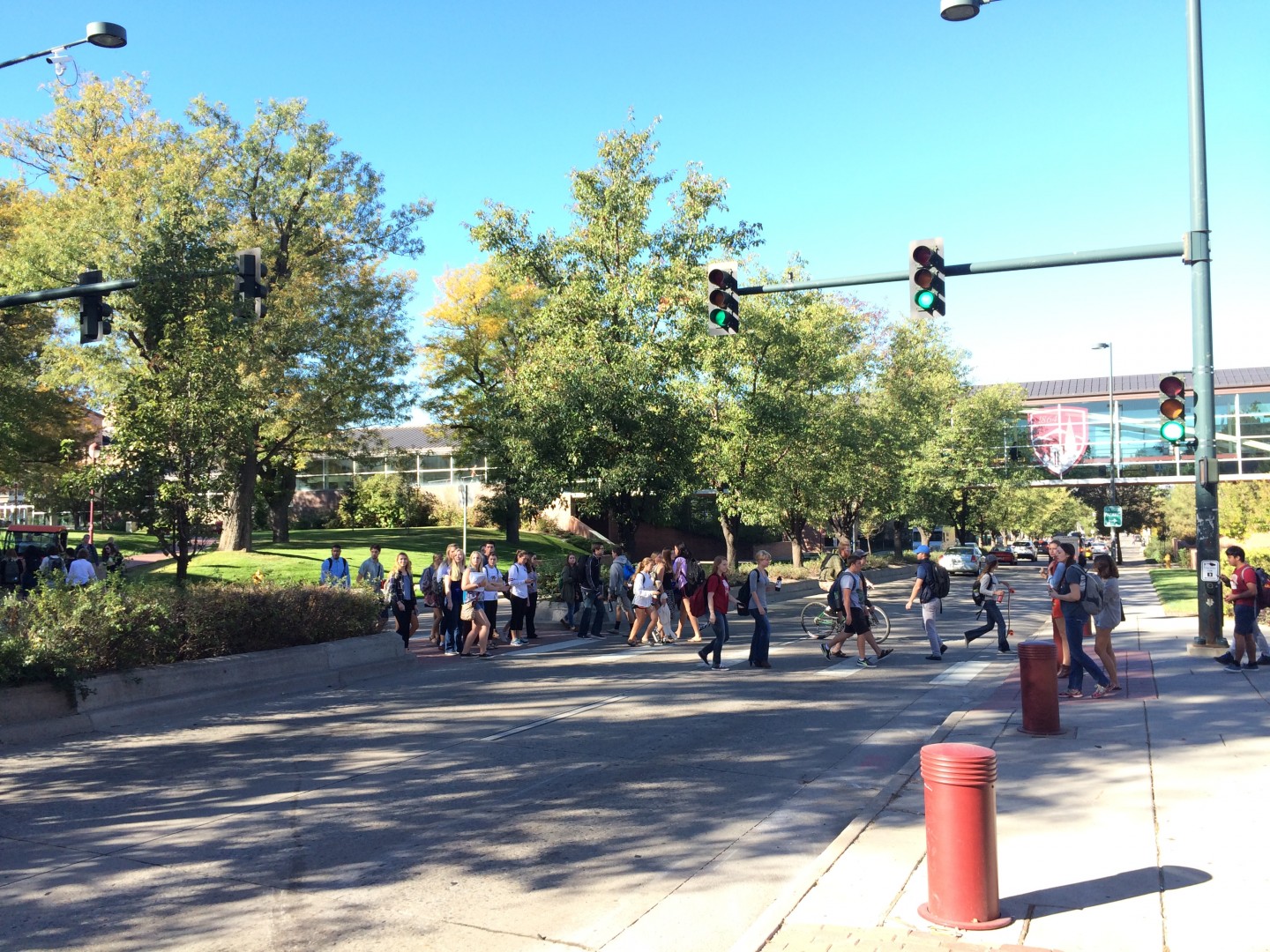Everyone has jaywalked before. When finding a crosswalk just isn’t convenient or there’s no traffic, what harm could there be in crossing the street? It’s fine to cross whenever one pleases on a low-traffic side street; it’s not fine to dart across Evans Avenue just after classes let out when 200 other people are trying to cram onto the median to get halfway across the street.
Jaywalking isn’t a problem, until it is. According to Campus Safety, in the last 24 months, 13 students have been hit by cars on streets that intersect campus or border it. Unfortunately, three of these incidents were fatal. Of these 13 incidents, not a single driver was at fault; pedestrians were held solely responsible for every one of those accidents because they were all jaywalking.
This is a ridiculously high statistic for a college campus and it needs to change. When it comes to pedestrian and traffic safety, DU uses the three “E” model — Educate, Enforce, Engineer. Educate by informing people about how to safely cross streets and interact with traffic. Enforce by holding people accountable for their actions when crossing streets; jaywalking is a civil offense that can result in a fine and citation. A physical way DU is looking to mitigate future incidents is to re-engineer streets. According to James Johnston, Sergeant for Community Partnerships, “There are plans to re-engineer Asbury between Sturm Hall and Sturm Law School. They’re looking to make that a one way [street] converting one of the lanes to slanted parking stalls and then doing two raised crosswalks.”
Raised crosswalks elevate the street level to that of the sidewalk, making pedestrians more visible and forcing vehicles to slow down. Additionally, it includes an increase in signage, making drivers more aware of the pedestrians. There is also a recommendation to do a similar resign on Iliff Avenue in terms of the crosswalks, putting three in on that street; one in front of JMAC, one in front of Olin Hall and one in front of the Newman Center.
When it comes to Evans Avenue it’s not as simple due to the fact that it’s a main artery street for the City of Denver. Campus Safety says DU has offered proposals to re-engineer the area but the city continues to refuse changing the street due to the high volumes of traffic. Campus Safety will continue to pursue changes in terms of changing stop light cycles, allowing more time to cross or putting in another crosswalk. In the meantime, Driscoll Bridge is a fantastic way to get across Evans without crossing the actual street, and you have the opportunity to warm up or cool off depending on the time of year.
It all comes back to education and making people aware of the risks of being a pedestrian and how to mitigate these risks. It’s important to use a crosswalk, glance both ways and, if it’s safe, cross. If the signal tells you not to cross, just wait. Waiting at a crosswalk can take a lot of time and if you’re running behind it may even make you late for class, but it’s much better to be late for class than to be hit by a car or cause an accident. So pause, take your time and enjoy DU’s beautiful campus while you wait.










